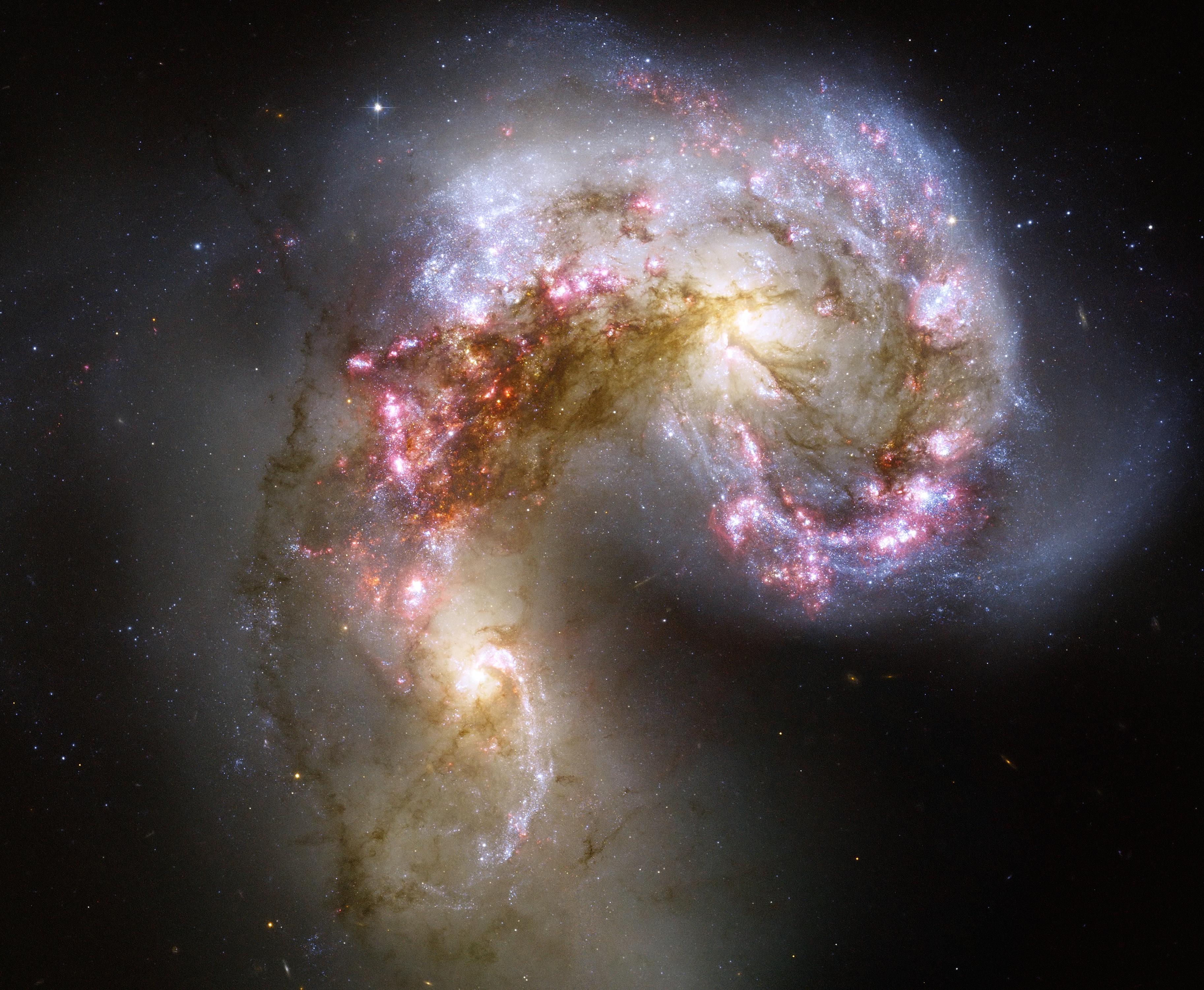When galaxies collide, they interact through gravity, creating substantial changes throughout the universe. They scatter the celestial bodies they hold within them and sometimes even create whole new galaxies. For that to happen though, they must be roughly the same size; otherwise, one would just consume the other. Despite the extraordinary nature of these events, galactic cannibalism is surprisingly not too rare in the vast expanse of the cosmos. Of course, they aren’t common, but they're more frequent than other cosmic events.
Galaxies collide when they move close enough for their gravity to pull them together, leading to stunning interactions. As they are pulled closer together, they accelerate, gaining more and more velocity. If the two galaxies are roughly the same size, once they meet, they smash into each other, scattering the planet and stars they held. During this collision, the stars and planets from the two different galaxies slam into one another spreading debris in all directions. The two galaxies oscillate around each other many times ripping each other to shreds.

After the two galaxies have merged, unique phenomena can occur that are often specific to galaxy mergers. One of these phenomena is starbursts—a moment in time when star formation occurs at a much faster rate than normal. This formation happens at such a high rate that it can actually alter the structure of the galaxy significantly. You can see where this event is happening in merged galaxies; it is usually a royal blue color.
After the bulk of the collision has passed, a new galaxy forms, and this can result in the formation of different types of galaxy shapes. The most common shape is an elliptical galaxy. These galaxies have an ellipsoidal shape and mostly have a smooth surface. As a result of the galaxies merging, these new elliptical galaxies often house up to over one hundred trillion stars. That number is so massive that our brains can’t really grasp it. For reference, the Milky Way has 100 billion stars; that’s 1,000 times less.
Galactic collisions play a key role in the large-scale structure and evolution of the universe. They bring birth and death to trillions of new celestial objects, and by doing this, recycle older solar systems into younger ones. This event will someday affect us as well. In about 4.5 billion years, the Milky Way and Andromeda galaxies will collide, and future humans might actually see this crisis occur. Who knows, maybe by then, the human race might have such advanced technology that it can manipulate gravity and move Andromeda out of the way. Only time will tell.